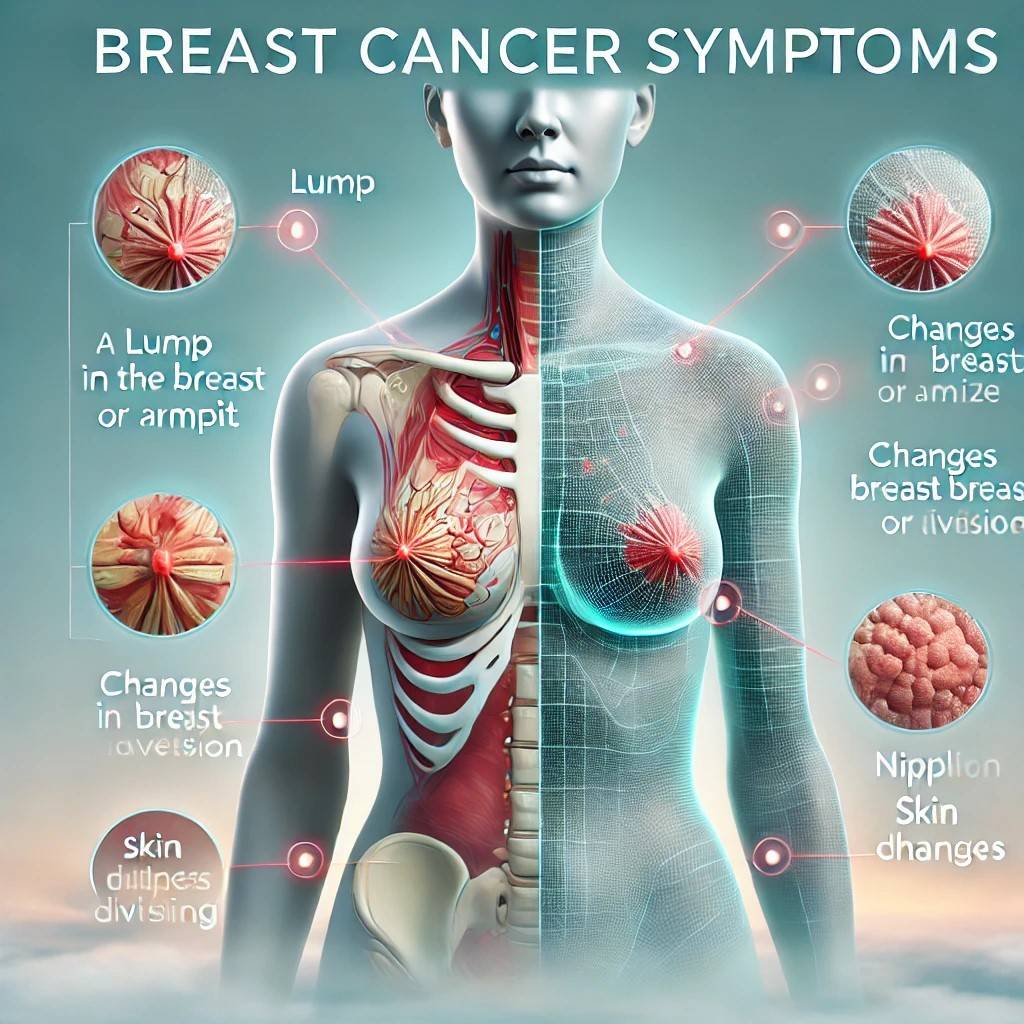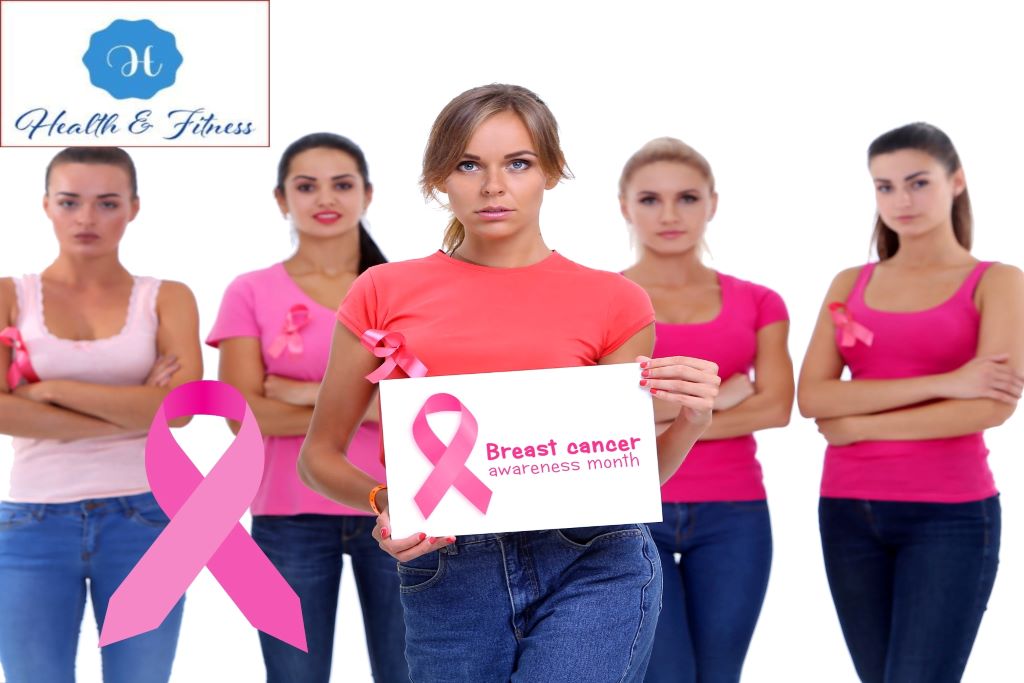Discover the key breast cancer symptoms and effective treatment tips in this comprehensive guide. Learn how to spot early signs and act today!
Breast cancer symptoms are an issue that affects numerous individuals. Whether it’s you, a family member, or a friend, understanding breast cancer symptoms and treatment options can make a big difference.
In this article, we’ll break down everything you need to know in simple, easy-to-understand language.
I’ve seen how overwhelming a breast cancer diagnosis can be, but I’ve also seen how knowledge and early action can lead to better outcomes. That’s why I’m sharing this guide—to help you feel informed and empowered.
What Are the Breast Cancer Symptoms?

Symptoms of breast cancer are the first step to early detection. Note these prevalent symptoms to keep an eye out for:
1. A Lump in the Breast or Armpit
The most recognizable symptom is often a lump or mass located in the breast or armpit. Not all lumps are cancerous, but it’s important to have any new lump checked by a doctor.
2. Changes in Breast Shape or Size
If one breast becomes larger or changes shape, it could be a sign of breast cancer. Watch for any swelling, dimpling, or puckering of the skin.
3. Nipple Changes
Changes in the nipple, such as inversion (turning inward), redness, or discharge (other than breast milk), can be a warning sign.
4. Pain in the Breast or Nipple
Although breast pain is usually not indicative of cancer, ongoing pain or tenderness in a specific area warrants a medical assessment.
5. Skin Changes
Redness, thickening, or scaling of the skin on the breast or nipple can be a symptom of breast cancer.
6. Unexplained Weight Loss
If you’re losing weight without trying, it could be a sign of cancer or other health issues.
Types of Breast Cancer
Breast cancer isn’t a single illness; it manifests in various types and forms. Here are some of the main types:
Ductal Carcinoma in situ (DCIS)
This type is non-invasive, with abnormal cells detected within the breast duct lining. It’s considered an early form of breast cancer.
Invasive Ductal Carcinoma (IDC)
The most prevalent form of breast cancer begins in the milk ducts and then extends to the surrounding tissues.
Invasive Lobular Carcinoma (ILC)
This variety originates in the milk-producing glands (lobules) and has the potential to metastasize to other areas of the body.
Inflammatory Breast Cancer
A rare but aggressive form of breast cancer that causes redness, swelling, and warmth in the breast.
Triple-Negative Breast Cancer
This type doesn’t have receptors for estrogen, progesterone, or HER2, making it harder to treat.
HER2-Positive Breast Cancer
This type has too much protein called HER2, which helps cancer cells grow.
What Causes Breast Cancer?
The exact cause of breast cancer isn’t always clear, but several factors can increase your risk:
- Age: Breast cancer risk goes up as we age, particularly after 50.
- Family History: Being closely related to someone who’s had breast cancer can raise your risk.
- Genetics: Changes in genes like BRCA1 and BRCA2 may heighten the risk.
- Hormones: Long-term use of hormone replacement therapy or birth control pills may increase risk.
- Lifestyle Factors: Contributing factors include obesity, inactivity, and alcohol intake.
Diagnosing Breast Cancer Symptoms
If you notice any symptoms of breast cancer, it’s important to see a doctor right away. Here’s an overview of what the diagnostic process entails:
Clinical Breast Exam
Your doctor will check your breasts and armpits for lumps or other changes.
Mammogram
A mammogram is an X-ray of the breast. It can identify tumours that are too tiny to be felt by touch.
Ultrasound or MRI
These imaging procedures offer enhanced and detailed views of breast tissue.
Biopsy
If a lump is found, a small sample of tissue will be taken and examined under a microscope to check for cancer cells.
Breast Cancer Risk Factors
Gaining awareness of the causes and risk factors of breast cancer can support you in making informed decisions about screening and lifestyle adjustments. Some key risk factors include:
- Age (risk increases with age)
- Family history of breast cancer
- A personal history of breast cancer or non-malignant breast diseases.
- Inherited gene mutations (such as BRCA1 and BRCA2)
- Early menstruation or late menopause
- Having your first child after 30 years age of or never experiencing pregnancy.
- Hormone replacement therapy
- Obesity
- Alcohol consumption
It’s important to remember that having risk factors doesn’t mean you’ll develop breast cancer, and some people with no known risk factors still develop the disease.
Breast Cancer Treatment Options
Breast cancer treatment varies based on the type and stage of cancer, as well as the patient’s overall health. Here are some common treatment options:
Surgery
Typically, the initial course of action for treating breast cancer is surgery. Options include:
- Lumpectomy: The removal of the tumor along with a small margin of surrounding tissue.
- Mastectomy: Removing the entire breast.
Radiation Therapy
Radiation uses high-energy beams to kill cancer cells. Post-surgery is frequently employed to eliminate any residual cancer cells.
Chemotherapy
Chemotherapy uses drugs to kill cancer cells. It might be given before or after surgery.
Hormone Therapy
Some breast cancers are fueled by hormones. Hormone therapy curbs cancer progression by inhibiting these hormones.
Targeted Therapy
Targeted drugs attack specific characteristics of cancer cells, such as proteins that help them grow.
Immunotherapy
Immunotherapy helps your immune system fight cancer. It’s applied to specific types of breast cancer.
Tips for Managing Breast Cancer
Living with breast cancer can be challenging, but these tips can help:
Stay Informed
Learn about your diagnosis and treatment options. Consult your doctor and look for trustworthy information.
Build a Support System
Lean on family, friends, and support groups. Finding solace in the company of those who understand can be very comforting.
Take Care of Your Mental Health
Breast cancer can penetrate your emotional well-being. Consider counselling or therapy to help cope.
Maintain a Healthy Lifestyle
Maintain a balanced diet, stay physically active, and ensure adequate rest. These habits can help your body recover and stay strong.
Follow Your Treatment Plan
Follow your doctor’s advice diligently and ensure to attend all follow-up appointments.
FAQs About Breast Cancer Symptoms
What are the 5 warning signs of breast cancer?
- A lump in the breast or armpit.
- Changes in breast shape or size.
- Nipple changes, such as inversion or discharge.
- Skin changes, like redness or thickening.
- Persistent pain in the breast or nipple.
What is usually the first symptom of breast cancer?
A lump or mass in the breast is often the initial symptom. However, some people may notice changes in breast shape, nipple discharge, or skin changes first.
What does stage 1 breast cancer feel like?
Stage 1 breast cancer might not present any noticeable symptoms. If symptoms are present, they might include a small lump or subtle changes in the breast.
What causes breast cancer in females?
Breast cancer can be caused by a combination of factors, including age, genetics, family history, hormones, and lifestyle choices like diet and exercise.
Final Thoughts
Breast cancer is a serious condition, but early detection and treatment can save lives. By understanding the Breast Cancer Symptoms and seeking medical help promptly, you can improve your chances of a positive outcome.
If you observe any changes in your breasts, act promptly and consult a doctor immediately. And remember, you’re not alone. With the right treatment and support, many people with breast cancer go on to live healthy, fulfilling lives.
Keep yourself informed, take proactive steps, and prioritize your health. Your body will thank you!
Recommended Reading
- How I Knew I Had Inflammatory Breast Cancer: A Journey of Awareness and Action
- Breast cancer diagnosis and treatment with COVID-19
- Hot Flashes Symptoms of Cancer: What You Need to Know



